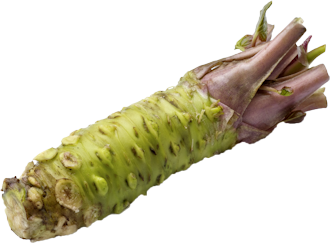|
The health benefits of wasabi include
providing a reduced risk of cancer and heart disease, as well as
anti-inflammatory properties for joints and muscles. It also helps to defend
against bacterial infections in the body and mouth, and can even reduce the
irritating effects of seasonal allergies. This potent plant can be used to treat
respiratory problems, and wasabi’s wealth of antioxidants helps to boost the
immune system and can aid in removing harmful toxins from the body.
Antimicrobial
Properties: Wasabi
contains antimicrobial agents which are useful for eliminating bacteria. The
Isothiocynates vapours prevent the growth of various strains of bacteria, yeast
and mould. Another one, Sawa Wasabi combined with ITCs blocks Helicobacter
pylori. This ability to eliminate bacteria makes it an excellent meal best
prepared together with raw fish. Remember raw fish has propensity to attract
bacteria during preparation due to the fact that it is eaten raw.
Anti-inflammatory
properties: Wasabi
paste is an important anti-inflammatory agent as it helps eliminate
inflammation in sores, injuries among others. This is despite the fact it is
claimed to cause inflammation in the nasal passageways, leading to congestion.
Anti-Cancer
Properties: It
is associated with foods such as broccoli and cabbage, which have chemicals
that improve liver health. The Isothiocynates or ITCs act to block enzymes that
lead to pre-carcinogenic compounds to change into carcinogenic ones, known as
Phase I enzymes. The chemicals enable the liver to better neutralize some
highly toxic substances that travel throughout the body, leading to cancer.
Wasabi reduces the risks of your developing cancer at a later stage in life.
Cardiovascular
Health : Due
to its ability to block platelet aggregation, wasabi helps to reduce chances of
heart attack and stroke. Wasabi works by stopping on time, platelets from
sticking together, which can be potentially fatal.
Wasabi
and Arthritis: Diet
rich in wasabi has anti-inflammatory properties which offer relief from aching
joints. It helps inhibit inflammatory pathways which lead to inflammation. In
particular is the action of isothiocynates in wasabi which also prevent
inflammatory bowel disease as well as asthma.
Prevention of
Cavities: Wasabi helps in getting rid your mouth of the obnoxious cavities
which cause you regular visits to your dentist. The bacteria responsible for
this are the streptococcus mutans. Some studies conducted have shown that
wasabi inhibits the growth of the said bacteria in the mouth due to the presence
of the chemical compound isothiocynates. Isothiocynates prevent sugars from
sticking on the teeth, which lead to cavities.
Natural
Sanitizer: Wasabi has
the ability to fight E.coli and staphylococcus as well as destroying pylori
bacteria. This is because of its anti-bacterial action.
Detoxifying
Effects: Wasabi
is a natural detoxifier as it helps the liver to get rid of toxins and
carcinogens. Its photochemical help get rid of toxic compounds stored in the
liver’s fatty tissues.
Low
calorie Food: Wasabi
prepared with peas makes a great low-calorie food which is suitable for those
seeking to lose weight. It is therefore a suitable substitute for other snacks
such as chips which are high calorie snacks.
Boosts
Digestion: Wasabi
peas are perfect food for the intestinal tract as it gets rid of harmful toxins
from the body. This has the effect of reducing the possibility of suffering
from diverticulitis .it is also rich in fibres.
|

